- Administrator
- Albums and Singles

A year on from their Public Information debut, Chicago duo Jeremy Lemos and Brian Case return to the fold with five new pieces of exquisitely produced wave-funk-techno-noise-electronics.
It takes great skill to pull off a three-minute electronic drone-grumble to kickstart your new record. Lemos and Case have it in droves. The tension is jet-black, loaded with friction. Modular energy pulses in and out, in and out. Then suddenly Case takes to the microphone, snarls and spits “Hey Bullfighter, read about you in a book...”
I W I finds Acteurs in a more assured, confident, angry mood than their debut. The signifiers are there – claustrophobic Ike Yard glare, Factory Floor throb, Diagonal abstractions – but we now have a bold swagger, stomping triumphantly into frightening new space. The crushing late-song collapse of "Honey Bear" is a breathtaking wall of clatter and noise that Tim Hecker would blush at. The loopy saw-tooth menace of "River Card" is as strange as anything they've done and the pummeling title track could easily shatter those murky dancefloors of strip-lit basements where people from the future dance in amongst the normals; machine drums puncturing the smoke, ear damaging feedback rattles the walls, torn Moog shapes cutting chatter to zero...end of night.
Out June 2nd. More information is available here.
Read More
- Administrator
- Albums and Singles

Editions Mego is proud to present the first recordings by Edvard Graham Lewis released this century. Having made his name in legendary punk/experimental outfits Wire, Dome and He Said, Lewis has developed an exceptional voice with ceaseless exploration of a wide variety of musical forms.
All Over is a song-based album that resides amongst the cracks between narrative and song, sound and music. Cloaked in an atmosphere of beauty and paranoia, All Over conjures the spirit of Wire's experimental pop trajectory whilst simultaneously exploring a multitude of sonic possibilities. Gritty mechanical operations support Lewis' wry human observations in a uniquely disturbing melange of punk, industrial, techno and pop. A dream logic plays throughout All Over courtesy of Lewis' odd lyrical content being set with all manner of disorientating sound and rhythm.

All Under, the companion release to All Over compiles soundtracks to films, installations and a self-penned short story. This is familiar terrain for Lewis who, along with Bruce Gilbert, produced the early interactive audio-visual installation 'MZUI' at London’s Waterloo Gallery in 1981.
Since this period, Lewis as been involved in countless soundtracks to all manner of cultural artefacts. The haunting score to Gunilla Leander's 2003 short film "All Under" was improvised in real-time with a sampler and FX processing and recorded onto mini disc. The results are a viscous ambience of swirls, feedback and distortion. This material was then adapted for an immersive 3 screen installation of the same visual material which features combinations of 6 nude bodies (4 men, 2 women) fighting and wrestling, filmed underwater. The soundtrack here crawls further in the depths as electronic phrases swim amongst a foreboding ambience. Both of these works encapsulate the same disembodied effect of the visual material as hovering, uncanny sound worlds seep into the listeners subconscious.
"The Eel Wheeled" features Lewis' reading one of his own bizarre stories underscored with a suitably disorientating soundtrack sourced from sound effects of the Prime Sounds SFX Library. This version was re-mixed by Thomas Öberg (member of Bob Hund and 27#11).
"No Show Godot" concludes the set. A soundtrack to a "sky movie" (road movies be warned) completed in 2013. Coming out of the initial sub-aquatic environments of the opening works, "No Show Godot" takes us on a spiralling high before folding into a gritty godly industrial mantra which comes along as a perfect means of tying up these two concurrent releases as a symmetrical whole.
Both albums will be out June 16th. More information can be found here.
Read More
- Administrator
- Albums and Singles
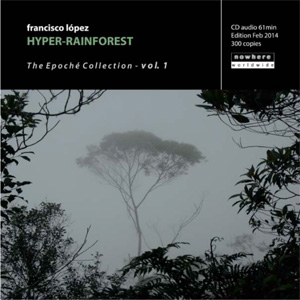 These first two installments of the Epoché Collection are a notable departure from the prolific Francisco López’s usual work, being that they are entirely untreated field recordings. Recording natural spaces is of course nothing new to him, as that has been an element of many of his compositions over the years. Even though he was essentially only a facilitator on these works; acting only on the selection of recordings and editing, the result still clearly shows his mark.
These first two installments of the Epoché Collection are a notable departure from the prolific Francisco López’s usual work, being that they are entirely untreated field recordings. Recording natural spaces is of course nothing new to him, as that has been an element of many of his compositions over the years. Even though he was essentially only a facilitator on these works; acting only on the selection of recordings and editing, the result still clearly shows his mark.
Both of these two self-released limited discs are based on recordings taken from various rain forests, but the overall sound and character of the two are quite different.Hyper-Rainforest is the more varied of the pair, constituting rainforest recordings over a 20-year period and across five continents, and was originally part of a massive sound installation.
Untreated field recordings, at worst, fall into the trap of being too sparse or simplistic, and are best relegated to the dollar store "relaxing sounds" bin.López, however, records them at their best.Hyper-Rainforest is anything but placid, capturing swarms of insects, frogs, and bird songs amidst roaring water and pouring rain.Recorded at a relatively loud level, the sounds of a waterfall or a rainstorm are as effectively harsh as the work of nearly any noise artist out there.
As loud as passages might be, however, they never overshadow the more delicate moments of these recordings.Subtle insect chirps and bird songs are allowed to be heard in the quieter segments, but the overall dynamics are constantly shifting.That is a huge asset of this recording:it never seems to stop or settle.Jumping from jungle to jungle via sharp, sometimes abrupt edits, it is the antithesis of mundane new age type nature recordings.
samples:
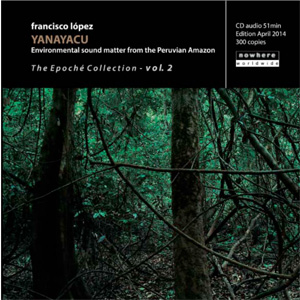 Rather than the expansive single piece on Hyper-Rainforest, Yanayacu is split into smaller, thematically defined segments.Consisting of recordings exclusively from the Peruvian Amazon, the more specific focus results in a recording that does not have the same rapid flow, but still avoids the negative clichés of field recordings.Instead of quick, shifting moments, these are more open and expansive pieces that are allowed to settle in and work on a more microscopic scale.
Rather than the expansive single piece on Hyper-Rainforest, Yanayacu is split into smaller, thematically defined segments.Consisting of recordings exclusively from the Peruvian Amazon, the more specific focus results in a recording that does not have the same rapid flow, but still avoids the negative clichés of field recordings.Instead of quick, shifting moments, these are more open and expansive pieces that are allowed to settle in and work on a more microscopic scale.
Perhaps most startling here is the juxtaposition of extremely different recordings.The first piece is mostly expansive ambience and chirping birds, having an inviting feel to it.The second, however, is underscored by a frightening reverberated noise that is extremely unsettling.The third piece also features a similarly monstrous animal noise that is not at all obscured by the louder birds and noisy insects and leads to both tension and fascination.
For me, these two discs seem to have a connection to the world of harsh noise.Hyper-Rainforest reminded me of something such as the Incapacitants or Hijokaidan in its single, unbroken hour-long duration.There are far more dynamic moments as opposed to those two artists' unrelenting wall of noise approaches, but to me it conveyed a similar intensity, never becoming too sparse or open.On the other hand, Yanayacu, with its intentionally placed long passages of silence was akin to early Whitehouse, when long gaps of silence were intentionally placed between songs to magnify the louder moments.Again, López's recordings of the Amazon are not nearly as harsh or aggressive in nature, but these empty moments did make the captured recordings seem all the more forceful.The fact that these field recordings made that transition from natural sounds to sound art compositions as I listened to them shows just what a master López is at selecting and editing sounds, even when he is not taking the traditional role of composer
samples:
 
Read More
- Administrator
- Albums and Singles
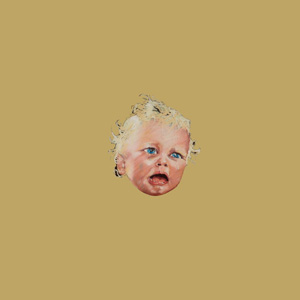 I find it rather odd that Swans have suddenly become digital media darlings at this point in their career. Not that Michael Gira and his exemplary band are undeserving by any means, but their post-reformation output is anything but accessible or commercially friendly. Small clips or snippets might seem to belie the force of their early records, but as full compositions these songs are anything but conventional. As great as The Seer was, To Be Kind is an even more focused distillation of the best moments of that record, while still maintaining that grandiose scale that no other band manages to reach.
I find it rather odd that Swans have suddenly become digital media darlings at this point in their career. Not that Michael Gira and his exemplary band are undeserving by any means, but their post-reformation output is anything but accessible or commercially friendly. Small clips or snippets might seem to belie the force of their early records, but as full compositions these songs are anything but conventional. As great as The Seer was, To Be Kind is an even more focused distillation of the best moments of that record, while still maintaining that grandiose scale that no other band manages to reach.
To Be Kind unsurprisingly fits nicely next to The Seer in overall style, but refines the moments of that record to an even sharper focus and eschewing the stuff from that album that did not sit as well with me.Epic bombast is the name of the game here, with most of these songs fitting in most comfortably aside the aforementioned album's title song and "The Apostate" in their mantra-like repetitions that build to glorious climaxes of noise and chaos.
There is a more significant studio dynamic when compared to The Seer, like due to the recording and engineering work by John Congleton, with Gira at the production helm.The result is a slightly thicker, more treated and effected sound rather than the stripped down, live-in-the-studio feel of the past two albums.This works quite well:no matter how well recorded an album is, it cannot fully capture the intensity of Swans in concert, so the additional production results in a different type of heaviness.
Since the folk trappings of My Father Will Guide Me Up a Rope to the Sky have been effectively excised (largely, I assume, as the last vestiges of the Angels of Light), the album perhaps shows its closest debt to another form of American roots music, namely the blues of the early 20th century.Not this is necessarily a new thing:without the distortion, apocalyptic drums and tortured vocals of the Cop/Young God era, the overall structure of those songs was essentially blues in nature.Here the genre's influence is far more overt, such as the cyclic guitar/bass/drum arrangements of "Screen Shot" and the mid paced, slide-guitar heavy introduction to "Just a Little Boy (for Chester Burnett)," which goes as far to recognize Howlin' Wolf’s legal name in its title.That overall sound might not be as obvious throughout the remainder of the album, but the loping, repetitive approach can be heard clearly throughout.
A good portion of the ten songs that make up To Be Kind have been played on tour for the past couple of years, and even appeared on the limited Not Here/Not Now live set from last year that helped fund this recording.Never a band to fit expectations, Swans are the band that releases a new album, and plays mostly new, unreleased songs when touring to promote it.These songs, in their studio forms, stay rather faithful to their live incarnations, mostly just coming across a bit cleaner in the mix, or a bit more complex due to the tweaking and layering the setting made possible.
One song that did not appear on the live set and made for a controversial teaser for the album is "A Little God in My Hands."On first impression it was so conventional and almost pleasant, shuffling along with more than a hint of New Orleans jazz behind it.The erratic stabs of electronics and distortion kept that sense of pleasantness from settling in, and I doubt many other songs that sound superficially upbeat have "shit and blood" referenced in the lyrics."Some Things We Do" is another that appears here for the first time and is the most radical departure for the album.A melancholy duet between Gira and Little Annie with strings by Julia Kent, the music fits the humanity conveyed within the lyrics, a bit of vulnerability on this colossus of an album.
Gira's insistence that Swans are not trying to capture hatred or violence, but a sense of ecstasy, appears in an appropriately perverse fashion on "She Loves Us."The jerky rhythms and horns, paired with his revivalist, singing-in-tongues vocals on the first half make for an appropriately bizarre take on spiritual music, which is magnified in the second half.The music locks into a more traditional rhythm, as chanted and reverent "Halleluiah"s are tracked with screams of "Fuck fuck fuck/Your name is fuck!"Gira's monastic chanting on the first half of the sprawling, 34 minute "Bring in the Sun/Toussaint L'Ouverture" follows the opening salvo of instrumental pounding, again giving that revivalist vibe before the sound of horses heralds the full on war of the second half.Epic is an adjective that has lost most of its meaning in recent years, but here is a case where it is 100 percent appropriate.
I think we are beyond the point of Swans needing to prove that this is a full on reincarnation and not a nostalgia trip, and the singular force of To Be Kind makes this explicitly clear.Due to the drastically varying phases in their career, there is no way I could truly rank order their discography, but this album sits perfectly with the others, and for me is the most consistently brilliant in this third phase of their career.It may go without saying, but I cannot think of any artist in any genre that can still be at the top of their game over 30 years into their career and after such a long period of inactivity.Swans may have become the darlings of some hipster publications that will remain nameless, but this is a case where the hype is surrounding an album of substance, not just something that is the current flavor of the week.
samples:
Read More
- Administrator
- Albums and Singles
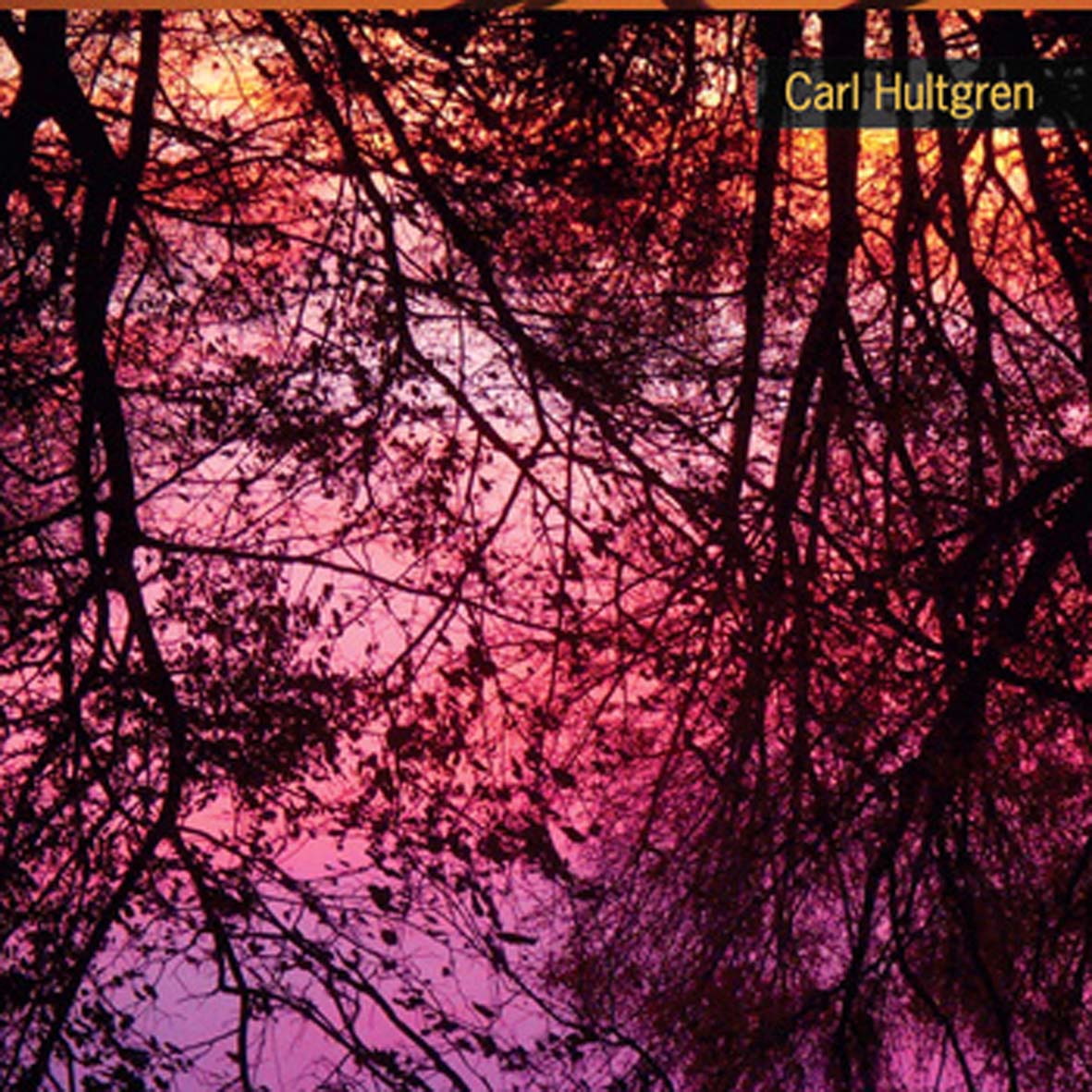 Most of Carl's first solo album perversely sounds almost exactly like what I would expect it to sound like: a Windy & Carl album without Windy.  On one hand, that is a little disappointing, as it would have been interesting to hear a completely different side of Hultgren's artistry and this material probably could have been the start to yet another great collaboration.  On the other hand, Carl's languorous, shimmering guitar passages have always been my favorite part of Windy & Carl's music and now I get an uninterrupted two-hour deluge of them.  Though the presence of a vocalist would have added some nice contrast and variety, Tomorrow is still strewn with more than enough dreamy beauty and understated masterpieces to work quite nicely on its own.
Most of Carl's first solo album perversely sounds almost exactly like what I would expect it to sound like: a Windy & Carl album without Windy.  On one hand, that is a little disappointing, as it would have been interesting to hear a completely different side of Hultgren's artistry and this material probably could have been the start to yet another great collaboration.  On the other hand, Carl's languorous, shimmering guitar passages have always been my favorite part of Windy & Carl's music and now I get an uninterrupted two-hour deluge of them.  Though the presence of a vocalist would have added some nice contrast and variety, Tomorrow is still strewn with more than enough dreamy beauty and understated masterpieces to work quite nicely on its own.
Actually, I suppose it may be a bit of an oversimplification to say that this album sounds almost exactly like an entirely instrumental Windy & Carl album: there are some significant differences, but I think they will only be apparent to the most serious of fans.  The most prominent one is that most of these twelve pieces feel a bit simpler, more fragile, and more understated that most of Windy & Carl's work.It almost seems like some pieces were real-time, "live" recordings of just Carl and his guitar, but they were not: Hultgren is just extremely nuanced in his layering this time around and Tomorrow's unhurried spaciousness is entirely by design, though it sometimes yields mixed results.  The other key differences are a bit more isolated and aberrant.  On "Hidden," for example, Hultgren unexpectedly augments his quavering, oceanic droning with field recordings of hisses, dripping water, and something that sounds like a light rain on a tin roof.  On another piece, "In This Land," Carl approximates a woozy and blurry twist on '70s country rock.
In general, however, Tomorrow’s songs fall into one of two styles: warm, shimmering layers of droning guitars or slow-motion chord progressions of chorused strums or arpeggios.  In both cases, Carl augments those foundations with subtle synth and processed guitar coloration.  To my ears, the dronier pieces feel like the more successful ones, as the more song-like ones often feel a bit too naked without vocals. Tomorrow’s 17-minute centerpiece, "Transparency and Light," does not quite fall into either category, however, as it sometimes eschews any kind of foundation at all.  Instead, Carl unspools a slow-motion almost-melody of melancholy synth or EBow swells that is organically embellished with subtle washes of guitar.  It is an absolutely beautiful and unique piece and goes a long way towards explaining why Carl wanted to release a solo album in the first place: the magic of "Transparency" lies entirely in its nakedness and fragility and any addition at all would have broken the slow-motion, hypnotic reverie.  Also, more than any other piece, "Transparency" evokes the album's stated inspiration: Carl's change in mindset after moving into a lovely old house surrounded by old trees.  If there can be an audio equivalent to sunlight flickering through gently swaying branches, this is probably it.
Notably, the CD and vinyl versions of Tomorrow are augmented with an additional six songs.  One is an instrumental version of Windy & Carl's recent "I Walked Alone" single that I probably could do without (the original is better).  The other five pieces are all surprisingly good for bonus tracks though.  A few are alternate versions of songs that made the album and a few are just untitled outtakes, but all could have probably been seamlessly inserted into the proper album.  In fact, a couple of them (the tambourine version of "Ledge" and the ambitiously expanded version of "Found My Home") might even be better than the versions that made the album (particularly the latter).
As alluded to earlier, all of that adds up to a veritable avalanche of twinkling, quasi-shoegaze bliss.  Most of it is good, some of it is great, and cumulatively it is a bit overwhelming (albeit in a good way).  As far as complete albums/artistic statements go, Tomorrow feels much more like an enjoyable and occasionally sketch-like side project than a true highlight in Hultgren's discography, but the epic "Transparency" is as essential as anything Carl has recorded to date and the extended version of "Found My Home" is not far behind.
 
Read More
- Administrator
- Albums and Singles
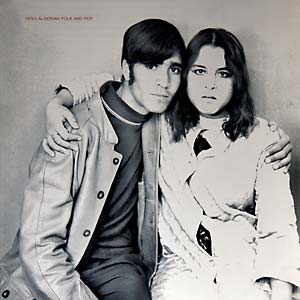
Sublime Frequencies is thrilled to present a second volume of classic tracks from Algeria's popular music history. Where volume 1 focused on the early to mid-1970s Rai scene in western Algeria, this album features a variety of pop and folk styles from that same period. From the heavier rock and psychedelic sounds of Rachid & Fethi, Les Djinns and Les Abranis, to the haunting folk music of Kri Kri and Djamel Allem and the film soundtrack moods of Ahmed Malek, 1970s Algerian Folk & Pop documents a key period in the modern musical renaissance of a nation in transition.
Most of these tracks are from 45 rpm singles, the key format during the early 1970s before the cassette took over as the medium of choice. Western musical influences can be heard throughout this extremely diverse record, yet there is an undeniable Algerian sense of sadness contained here within a more tolerant space in time between two of the country's most significant historical periods; National Independence from France and the darker times of a brutal civil war yet to come. Compiled by Hicham Chadly, this limited edition LP comes in a full-color gatefold jacket with lovely images from the period and extensive liner-notes by Omar Zelig, Algeria's most legendary radio DJ.
More information will soon be found here.
Read More
- Administrator
- Albums and Singles
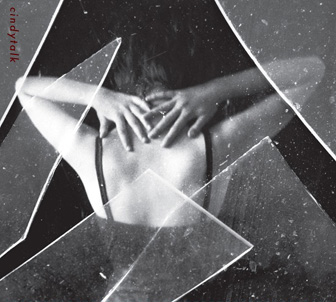 Not all that dissimilar from the trend one time collaborator Robert Hampson made from Loop to Main to his solo works, Gordon Sharp has also evolved from a more conventional musician (appearing on works by This Mortal Coil and the Cocteau Twins no less) to an idiosyncratic electronic composer in the past 30 years. In line with his work from the earlier part of this century, touchedRAWKISSEDsour is a mass of laptop generated noises that are actually much more nuanced then they would seem on the surface, intentionally obscuring a rich world of composition.
Not all that dissimilar from the trend one time collaborator Robert Hampson made from Loop to Main to his solo works, Gordon Sharp has also evolved from a more conventional musician (appearing on works by This Mortal Coil and the Cocteau Twins no less) to an idiosyncratic electronic composer in the past 30 years. In line with his work from the earlier part of this century, touchedRAWKISSEDsour is a mass of laptop generated noises that are actually much more nuanced then they would seem on the surface, intentionally obscuring a rich world of composition.
One of the things I found most compelling about my first listen to touchedRAWKISSEDsour is how Sharp sneakily mixes in conventional sounds and instrumentation in these otherwise digital whirlwind chaotic recordings.Low-end sweeps and high pitched screeching might be the first impression of "Dancing on Ledges," but a little bit of guitar begins to sneak through and at the end taking on an almost overtly funk sound to it.Piano appears throughout on the lengthy "Yugao," and makes for a stark traditionalist contrast between the off-kilter orchestral samples and textural layers of DSP noise.It makes for perhaps the most melodic, beautiful piece of music on the album, but sounds like it came from a different universe entirely.
Noisy might be a characteristic of recent Cindytalk albums, and this is no exception, but there is also a good deal of rhythm to be had, even though it might be unconventional to say the least."E Quindi Uscimmo a Riveder le Stelle" has Sharp piling dissonant loops together with harsher moments of laptop noise stabbing through.The loops, while of an unclear source, have a metallic complexity to them that fits together like a digital gamelan.Closing piece "Mystery Sings Out" is built from similar rhythmic techniques, but, in a more open, subdued composition.What sounds like synthetically modeled rain and thunder sounds creates the mood as bits of voice sneak through, perhaps as a passing reference to Sharp's previous role as a vocalist.
More rudimentary and erratic rhythms underscore "Reversing the Panopticon," paired with a twinkling, melodic electronic passage up front in the mix.While at first it might seem to follow a more conventional structure, before long it slips into disorder and entropic noise, with even what sounds like some raw guitar feedback tacked on at the end.A majestic, almost fragile melody also is emphasized on "Mouth of my Sky (Open Up and Swallow Me)," but again placed within the confines of a larger industrial soundscape.The beautiful and ugly slowly lurch along together for the piece, paired up perfectly.
Like last year's A Life is Everywhere, touchedRAWKISSEDsour at first blush makes for a messy, dissonant and extremely chaotic sounding record.It does not take long, however, for Sharp's musicianship and ear for composition to reveal itself.These concessions to melody, or brief flashes of conventional instrumentation is exactly what makes this album so memorable.Complex and multifaceted, each song seems to mutate with every listen, a feat very few artists working in similarly discordant techniques can manage to accomplish.
samples:
 
Read More
- Administrator
- Albums and Singles
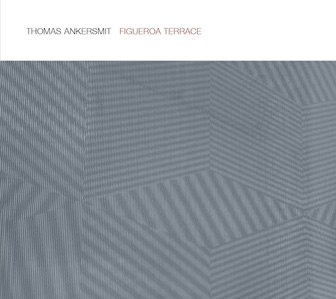 Over the last few years, Thomas Ankersmit has been shifting his primary instrument from a saxophone to modular analog synthesizer. Surprisingly, Figueroa Terrace is technically his first album proper, with previous releases consisting of collaborations and live performances. Unsurprisingly, however, is his use of the less immediate setting of the studio to his advantage, constructing a dizzyingly dynamic album length piece that showcases all of the strengths he has shown in previous releases, with an even higher level of polish.
Over the last few years, Thomas Ankersmit has been shifting his primary instrument from a saxophone to modular analog synthesizer. Surprisingly, Figueroa Terrace is technically his first album proper, with previous releases consisting of collaborations and live performances. Unsurprisingly, however, is his use of the less immediate setting of the studio to his advantage, constructing a dizzyingly dynamic album length piece that showcases all of the strengths he has shown in previous releases, with an even higher level of polish.
Even within this studio setting, Ankersmit made a conscious decision to avoid digital sound sources as much as possible, and other than some reverb and recording/editing, this piece is entirely analog.That feel is apparent from the first minutes of Figueroa Terrace, with scattered ring modulated tones skittering along rapidly over a bed of low end drone.The piece never sits still for these initial minutes, and the hyperkinetic nature makes it stand out well without ever becoming dull.
Eventually the composition drops into quiet ringing tones and what sounds like (but is obviously not) a series of rapid microscopic digital delays. It is during these quiet moments the sound of a scraping contact microphone cuts through, jagged and raw, acting as the only non-electronic sound on this entire record.At the same time, the quiet ringing becomes shrill and raw before withdrawing to leave a massive expanse of insect like noises and heavy low end rumble.
Spaciousness becomes the focus for awhile, with synthetic ambience occasionally met with a low end idling bass passage or high frequency radar pings.Chirping beeps and noisy interruptions keep the sense of movement happening before converting into sharp, violent high pitched bits with sweeping low end passages.The final minutes throw everything together to build to an appropriately dramatic climax.High and low frequency passages clash violently, reflecting off one another to build an appropriate sense of tension.At this point, while becoming the most dissonant, it also has the most traditionally composed feel to it, the structure helping guide the noise perfectly.
I have begun to wonder how long it will be before modular synthesizers becomes passé.While some artists, such as Thomas Ankersmit and Robert Piotrowicz use the confusing array of patch bays and adjustment knobs brilliantly, for many others it comes across as just random noise.I mean, damn, Billy Corrigan just did a performance with one, which simply served to emphasize my theory that it can be an instrument that is more about how many modules a person has instead of how well they use them.Figueroa Terrace, however, reassured me that the instrument still has relevance when being manipulated by a true artist and composer, and Ankersmit continues to demonstrate how much of an expert he is.
samples:
 
Read More
- Administrator
- Albums and Singles
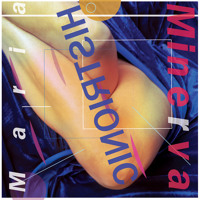
NNF's favorite comedienne/diva/artstar Maria Minerva returns with her greatest album to date, Histrionic, encapsulating universes of life wisdom, deadpan truth, and heartbreak abstractions.
The album's 11 skewed slices of synthetic pop function collectively as a fragmentary self-portrait: there's the shuffling, layered beats of various UK bass scenes absorbed during her years in London clubs; the anthemic '90s global dance pop of her youth in Estonia; the spoken-word and experimental samples gleaned from her university days; and the floating textural ballads born from the displaced life of a touring musician, stranded in hotel rooms and airport terminals. The lyrics are similarly layered, vulnerable yet oblique, embracing pop tropes of romance and heartbreak while also hinting at their hollowness. It’s this woozy commingling of dispassion and melody, of fantasy and foreignness, that infuses Histrionic with such rich ambiguity.
More information here.
Read More
- Administrator
- Albums and Singles

Membrane Pop is the debut Software Recording Co. release by experimental duo Sculpture.
The self-described opto-musical agglomerate was born in 2008 after a chance encounter between British musician Dan Hayhurst and New Zealand animator Reuben Sutherland. By combining practices, the pair's first test splattered a psychedelic palette that pushed them to explore sensorial intricacies emerging from chance operations.
Raw materials for Sculpture's music include a mix of analog and digital practices. In Hayhurst and Sutherland’s hands, tape manipulation, samples, found sounds, aleatoric and algorithmic programming and live improvisation become more complementary than you might imagine.
Sculpture draws from experimentalism to promote new potentials for pop and electronic music in an age where many of our sci-fi fantasies have become mundane occurrences. "I’m aiming to make a coherent, adventurous electronic pop record with its own voice and identity," Hayhurst explains. "I don't think experimental music has to be dark, difficult or joyless. I try to make something playful, and maybe a little absurd."
At the center of Membrane Pop is a phenomenological approach to sound and performance. "Symbolic Molecule" is a morphing, unsettled groove, but its addictive properties remain potent. "Polymorphic Operator" bubbles with a sort of chemical effervescence; the ghost of Jamaican dub modulating itself into an infinite haze. Sculpture's compositional predilection emerges amidst scrambled sound worlds in "Hackle Scam Populator," while "Distraction Display" is perhaps the closest ambient cut on the record.
What makes Sculpture sculptural (we bet the original Abstract Expressionists would have dug them) are moments where their craftsmanship feels almost animate within the constraints of musical time. In the opening seconds of "Lingual Junk," these moments appear to freeze and unthaw an old recording. As the track narrative unfurls, you can feel Hayhurst fighting to acclimate the sound from out of cryostasis and into his reality.
If a majority of the music you hear today resembles the hard-set stone carvings of history, then Sculpture's offerings are imagined, transitory statues with no fixed place in time. Hearing Membrane Pop in a different context, time or place may well bring about a different experience. Or perhaps a similar result.
Sculpture's Membrane Pop will be released in LP and digital formats on May 13, 2014.
More information available here.
Read More
- Administrator
- Albums and Singles

Universe Thin As Skin is the debut solo album from Portland, Maine's Tom Kovacevic, a multi-instrumentalist who has been a vital part of the Portland musical landscape through his work with the bands Olas, Fire on Fire, Cerberus Shoal, and tarpigh. For his solo debut, Kovacevic focuses on the Arabic music he has been studying for twenty years.
Kovacevic had played guitar for many years when he decided to learn how to play the guitar’s ancestor, the oud. After playing the oud for some time he learned the nay flute (rim blown and fully chromatic) which is not only one of the oldest instruments in continual use (4,000+ years), but also one of the most difficult to play. One of the predominating musical influences on the record is related to the drums used. The djembe and tchung drums used were made in Senegal, and artists such as Bembeya Jazz National, Super Diamano De Dakar, and Salif Keita are vital influences.
Universe Thin As Skin was recorded at the Blue House, where Tom lives with Cerberus Shoal and Big Blood member Caleb Mulkerin, who also recorded the album. The record took about six months to record, as both would meet when they had availability. This is also the main reason Tom played all the instruments on the record.
Lyrically the album addresses life in this world in which we find ourselves. There are references to the new physics, an area of interest. "Song for Peter" was written for the brother of a good, good friend whose life hung in the balance (he survived). The nay flute pieces "Kürdi" and "Dulab Bayati" are in traditional Maqams (modes), and "Dulab Bayati" is in a traditional Arabic form. The title track is special because it was written in the living room, just in front of the dining room pictured on the front and back covers of the album. This is the house Tom grew up in, and it is no longer in the family.
Tom currently performs with Olas, a group that features two flamenco dancers and original compositions, as well as with the Alhan Middle Eastern Classical Music Ensemble.
More information is available here.
Read More

